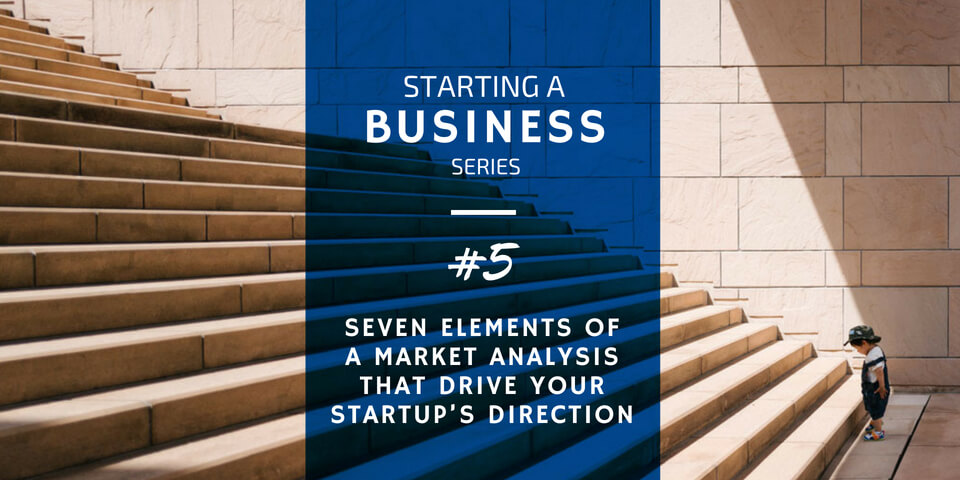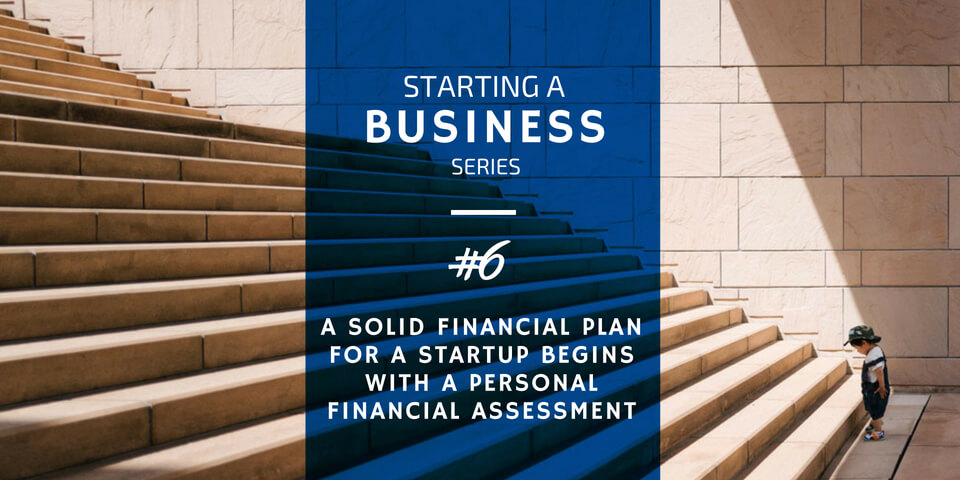
7 Questions to Answer When Conducting a Market Analysis for A Startup – Article #5
August 13, 2018
8 Ways to Stabilize Your Personal Finances Before Starting a Business – Article #7
August 27, 2018A Financial Plan for Startups Begins with a Personal Financial Assessment – Article #6

Entrepreneurs with a BIG IDEA tend to charge hell with a water pistol. You have a product or service, you see an immediate need, and you don’t want to waste a second to meet it. That’s just who you are, as an entrepreneur. But it’s not time to start the battle just yet. It is senseless to brandish water pistols without a reservoir of water to refill them. You need to build and fill a financial reservoir in your personal life so that you have enough to sustain your business life. Therefore, I invite you to sit down on a cushy couch and learn from my “Grandma’s Wisdom.” I’m going to help you prepare your personal financial assessment as the first step in building a financial plan for your startup. So let’s get started, crunching the numbers and seeing how they affect the financial plans for your startup.
Podcast Time Index For “Preparing Your Personal Finances for Starting a Business”
- 00:31 – Preparing your personal finances for starting a business
- 02:32 – Update your personal financial statement
- 05:55 – Do you have an emergency fund?
- 07:46 – Do you have the proper insurance?
- 11:47 – Do you have your legal documents?
- 13:55 – Have you eliminated your unsecured debt?
- 16:55 – Update your budget
- 17:14 – Minimize your expenses
- 18:16 – Consider a second income while starting your business
- 20:22 – Do you need to improve your credit score?
- 21:29 – Business Analysis – Do you need more than normal funds to start?
- 23:23 – Can you start buying business equipment beforehand?
- 23:57 – Do you need to do a trial run on the business?
- 24:35 – Have you spoken with a Banker to determine if lending is possible?
- 25:22 – Key Notes
- 25:31 – Do not intermingle personal and business funds
- 26:12 – Set aside tax money
How to Do A Personal Financial Assessment
As you prepare to begin a business, you’ll need to update your personal financial statement. Essentially, you will want to make a list of everything you own and everything you owe. In financial terms, you’re recording your “assets” and your “liabilities” to determine your personal net worth.
RESOURCE: Downloadable Personal Budget Spreadsheet
List Your Assets
Typically, when filling out a financial statement for a lending institution, you’ll record your assets on the left side of a ledger. Here is where you want to list the cash you have in the bank and any savings you have in retirement accounts. You’ll list the value of any vehicles, real estate, or collectibles that you own. If you already own a business and are starting another business, list the business interest you own. You might even list some monies that people owe you on this list of assets.
Sounds easy, right? Well, recording your assets can get a bit tricky. Many of the things you buy and think are assets have no actual value. For instance, if you purchase a brand new 60″ TV for $500, chances are you won’t get anywhere near that amount for the TV once you use it. Similar depreciation (loss of value) happens when you buy vehicles, boats, smartphones, drones, machines, or equipment.
Therefore, when you’re completing your personal financial statement, you don’t want to over-value your assets. If you’re dealing with a bank, the underwriter’s going to know you can’t sell a used 60″ TV for $500. If you sell it at a pawn shop, you might get $100. Thus, the loan underwriter will discount the value of your assets if you have not.
However, a bank underwriter cannot discount the value of your cash accounts or retirement accounts. If you have $1000 in checking or $100 in checking, that’s the actual value of that asset. Additionally, if you have a home that has equity in it, the bank can determine it’s value based on the value of sales prices of comparable houses around yours.
List Your Liabilities
After you list your assets, make a list of your liabilities. The right-hand column of the ledger will hold information about any money you owe others – your debt. You’ll want to record your secured debts—those backed by some form of collateral—like home loans, vehicle loans, boat loans, business loans, equipment loans, etc,… Then, you’ll want to record your unsecured debts—those which are unprotected by collateral. These could include credit card debts, student loans, personal lines of credit, etc,…
Each secured debt will correspond to an asset on the left-hand side of the ledger. For instance, if you’ve listed the current market value of your real estate holdings on the left, you’ll list the current amount of your mortgages on the right. Likewise, if you’ve recorded your vehicle’s value on the left, you’ll record any loans against the vehicle on the right.
4 Personal Financial Questions That Directly Affect Your Business’ Financial Plan
After you’ve listed all of your current assets and liabilities, your net worth can be determined by subtracting your liabilities from your assets. Obviously, your goal is to own more than you owe, especially if you are asking a lending institution for money. However, you can also use the information on your personal financial report to determine your readiness to begin a business.
Look, specifically, to answer the following questions:
#1 – Do you have enough cash set aside for emergencies?
Usually, I suggest that individuals who work for companies set back 3 to 6 months’ worth of income in a cash account. That way, if an emergency happens, you can get to it quickly. However, if you’re looking to start your own company, you might have to support yourself for a longer period of time than most. If you’ve developed your business plan and realize that you may not have an income for 1 to 2 years, you need to set aside enough cash to cover 1 to 2 years of personal expenses. Do you have that much cash on hand?
#2 – Do you have proper insurance in place?
In order to secure a loan from a bank or to guarantee your family is not left destitute if you die or become disabled, you need to take out the proper insurance policies that will allow you to keep your assets and pay your liabilities.
Life Insurance
First, you want to make sure you have a life insurance policy large enough to replace the monthly income you bring home and/or to cover your family’s current and future debts. Can your spouse live comfortably on the amount you leave behind, and can the policy pay off your mortgage and cover your kids’ college educations? Furthermore, does the term last at least 20 years enabling you to get through the start-up and growth phases of your business?
Disability Insurance
Next, do you have the right amount of disability insurance in place? Typically, financial advisors recommend that you take out enough to cover roughly 60% of your current income. Let’s say that you are making $50,000 a year before you leave your current job to start a business. That means you could probably get $30,000 a year in coverage, or $2800 per month in disability benefits if you can’t work.
Health Insurance
Finally, make sure you have the proper health insurance in place. I don’t care if you use COBRA plans, individual policies, state plans, or MediShare style policies. Just make sure you have some type of basic health coverage. You don’t want to end up liquidating your assets to pay for a hospital stay.
#3 – Do you have your basic legal documents in place?
Having insurance in place can only protect your spouse, your family, and your assets to a certain degree. You also need to have basic legal documents in place. That way, if something happens to you, you have already dictated what you want to happen with your assets and liabilities. I understand that attorney fees can get pricey, but you can’t put a value on peace of mind. Before you start your business, you want to sign and guarantee a Living Will, a Last Will and Testament, a financial Power of Attorney, and a durable Power of Attorney.
#4 – Do you need to eliminate any unsecured debts?
When you recorded your liabilities, you listed secured and unsecured debts. If it’s a secure debt, you’ll see an asset on the left tied to a liability on the right. These are usually your mortgages, your car loans, your boat loans, your tractor loans, etc. As long as your asset is worth more than the debt you owe on it, you can continue to make timely payments on that debt without worry. If worse comes to worst, you could sell the asset to pay off the entirety of the debt.
 However, unsecured debts have no corresponding assets to sell if you can’t pay the loan. These are your credit cards, your student loans, and your personal loans. As you prepare to start a business, these are the loans you might want to look at paying off or reducing. Obviously, if you have $200,000 of student loan debt from an advanced degree you earned, you probably aren’t going to pay off that debt before you begin a business. Ideally, your advanced degree will give you the opportunity to make a lot of money in your business, and you can use the money you make to pay for that school loan. Yet, if you owe $5,000 or $10,000 for school loans, maybe you could work on paying those off before you start your business.
However, unsecured debts have no corresponding assets to sell if you can’t pay the loan. These are your credit cards, your student loans, and your personal loans. As you prepare to start a business, these are the loans you might want to look at paying off or reducing. Obviously, if you have $200,000 of student loan debt from an advanced degree you earned, you probably aren’t going to pay off that debt before you begin a business. Ideally, your advanced degree will give you the opportunity to make a lot of money in your business, and you can use the money you make to pay for that school loan. Yet, if you owe $5,000 or $10,000 for school loans, maybe you could work on paying those off before you start your business.
Likewise, you might attempt to pay off your unsecured credit card debts or personal lines of credit before you begin your business. Investors looking at your financial statement want to see you with a low debt-to-income ratio. The more debt you have overall, the more distorted your ratio becomes. If you have assets to offset your secured liabilities, then you’ll want to reduce your unsecured liabilities first. Investors want to see that you have enough income to cover your current liabilities AND any additional ones you may incur within your start-up business. Therefore, start paying off the liabilities that have no corresponding assets.
What Do Personal Finances Have to Do with Financial Plans for Startups?
Folks, almost everyone has debt. Not everyone has assets. Banks and investors want to see that you own more than you owe. And honestly, you’ll want your net worth to be in the black before you start a business, too.
Bankers look at these facts and figures for good reason. So do yourself a favor and look at things the way that they do. Make sure you have enough money to pay your personal expenses if your start-up business cannot. Set aside an emergency fund. Protect yourself in cases of disasters, disability, or death. Then, pay down or pay off as much unsecured debt as you can. The last thing you want is to start a business without enough cash to sustain it.
Next Step
In the next article, we’ll take a look at your personal income and expenses. Assets and liabilities are one thing, income and expenses are another. In the meantime, remember that life is good. Life is hard. Business is exciting. Analyzing a personal financial statement to determine your readiness to start a business can be daunting. But it doesn’t have to be. Let’s continue to make our lives, at least, financially simple.
If you’d like help with your personal financial assessment, reach out to us! The business experts at Financially Simple are here to help.



